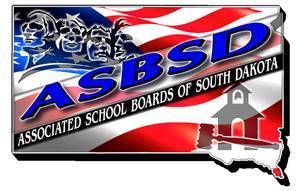This article appears in the September edition of The Bulletin.
Each month, NSBA Western Region Director and Mitchell School Board Member Neil Putnam will provide an update on the National School Board Association.
By Neil Putnam, NSBA Western Region Director, Mitchell, SD
I want to thank ASBSD for providing me this introductory piece with the intention to subsequently report to you on various National School Board Association (NSBA) activities and updates on federal issues affecting the South Dakota’s schools.
NSBA’s mission is “Working with and through our state associations, NSBA advocates for equity and excellence in public education”.
NSBA was founded in 1940 and currently serves approximately 90,000 school board members, 13,600 school districts and 50 million students.
Please visit the www.nsba.org website and notice the plethora of services and products NSBA has available for school boards. NSBA also provides assistance to state associations for enhancement of their services.
NSBA advocates for school boards on Capitol Hill, at the White House and in the Supreme Court and the new NSBA leadership is providing additional resources in a variety of venues to strengthen school board advocacy and preserving the premise that school boards are the foundation of what is ‘public’ of public education.
As the first South Dakotan to serve on the NSBA Board, it is with humility and honor that I am afforded the privilege to share the successes, challenges, concerns and opinions of the public schools of South Dakota and the Western Region to a national audience.
I was elected to the NSBA Board of Directors as one of three Western Region Directors that represent the states of North Dakota, South Dakota, Nebraska, Kansas, Oklahoma, New Mexico, Colorado, Wyoming, and Montana.
Prior to joining the NSBA Board, I served six years on the ASBSD Board of Directors. I served as ASBSD President in 2011 and am currently in my 13th year on the Mitchell School Board.
I am seeking input from the state and region on how I may be an effective representative for them. This part of the country has some unique characteristics and dynamics, such as sparse populations, a major agricultural economy, infrastructure limitations, and a rural/small town lifestyle.
I can report that NSBA recognizes our region’s challenges and opportunities and their collaborative strategy is energizing school board members from coast to coast. Instead of using the diverse economies, cultures, and politics to divide regions, NSBA is using them to unite the belief that we are obligated to prepare all students for tomorrow regardless of their abilities, circumstances and means.
Thanks again for your attention and I am looking forward to contributing to the state and national conversation on your behalf and for the students you serve. I look forward to hearing from you.

